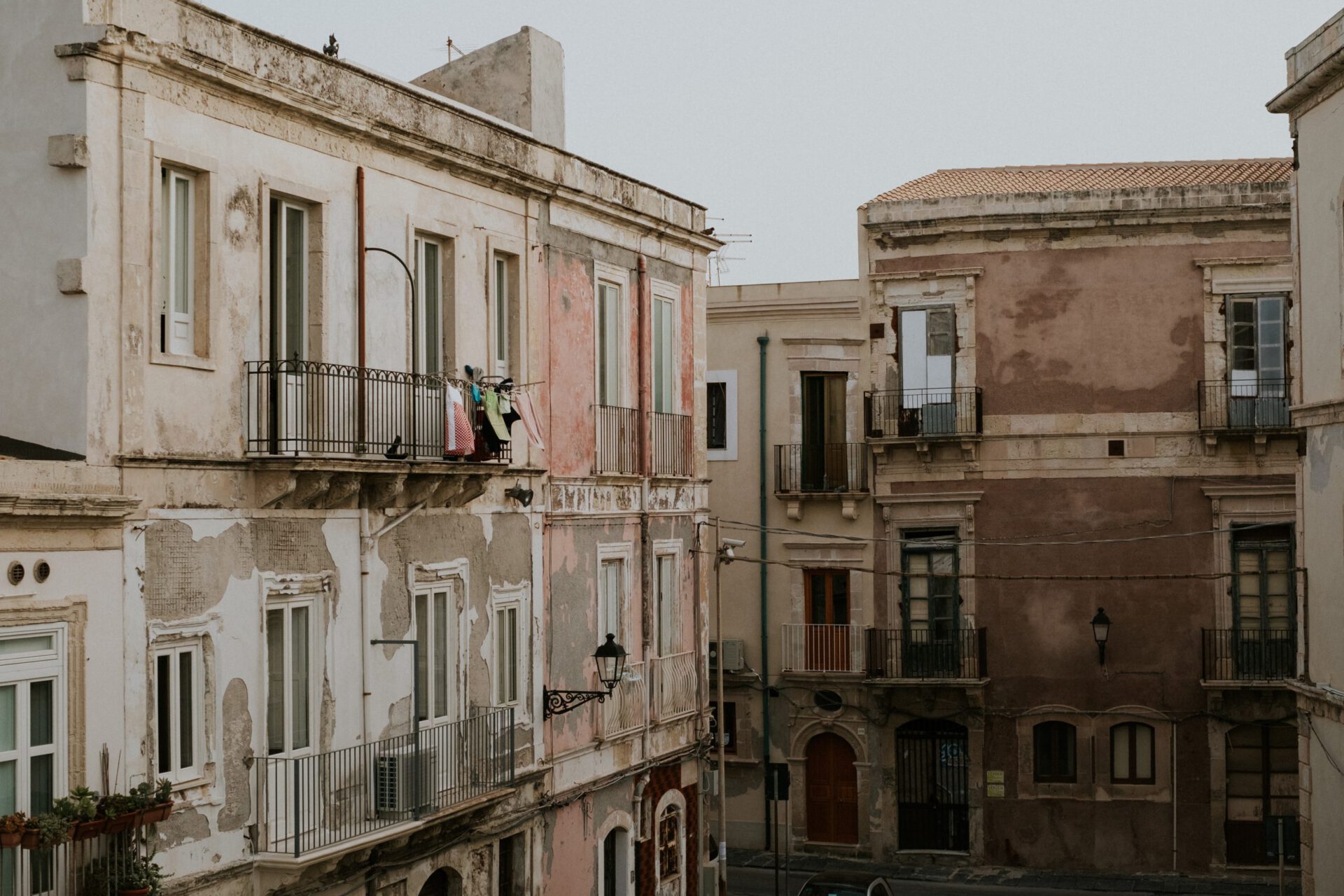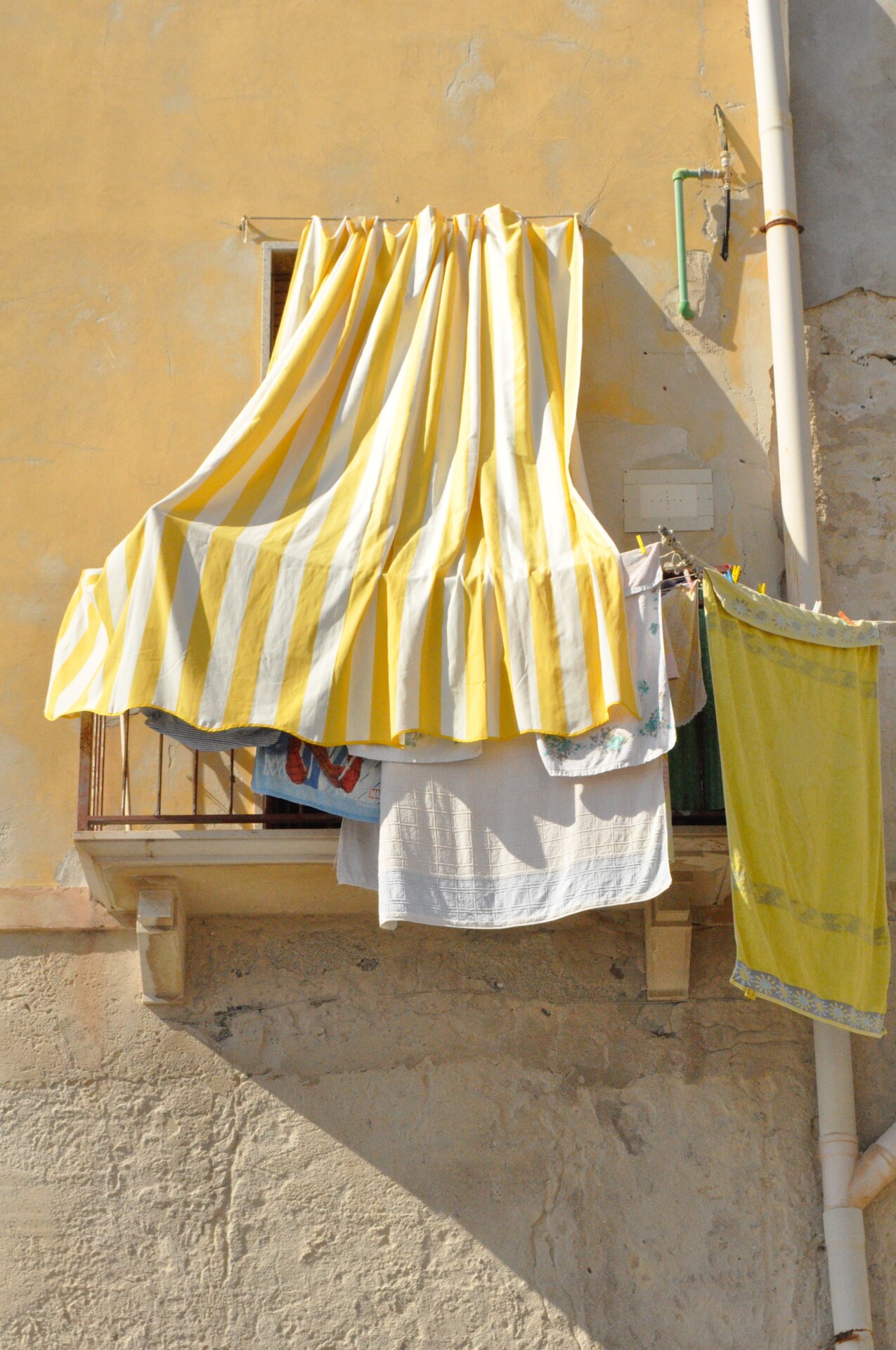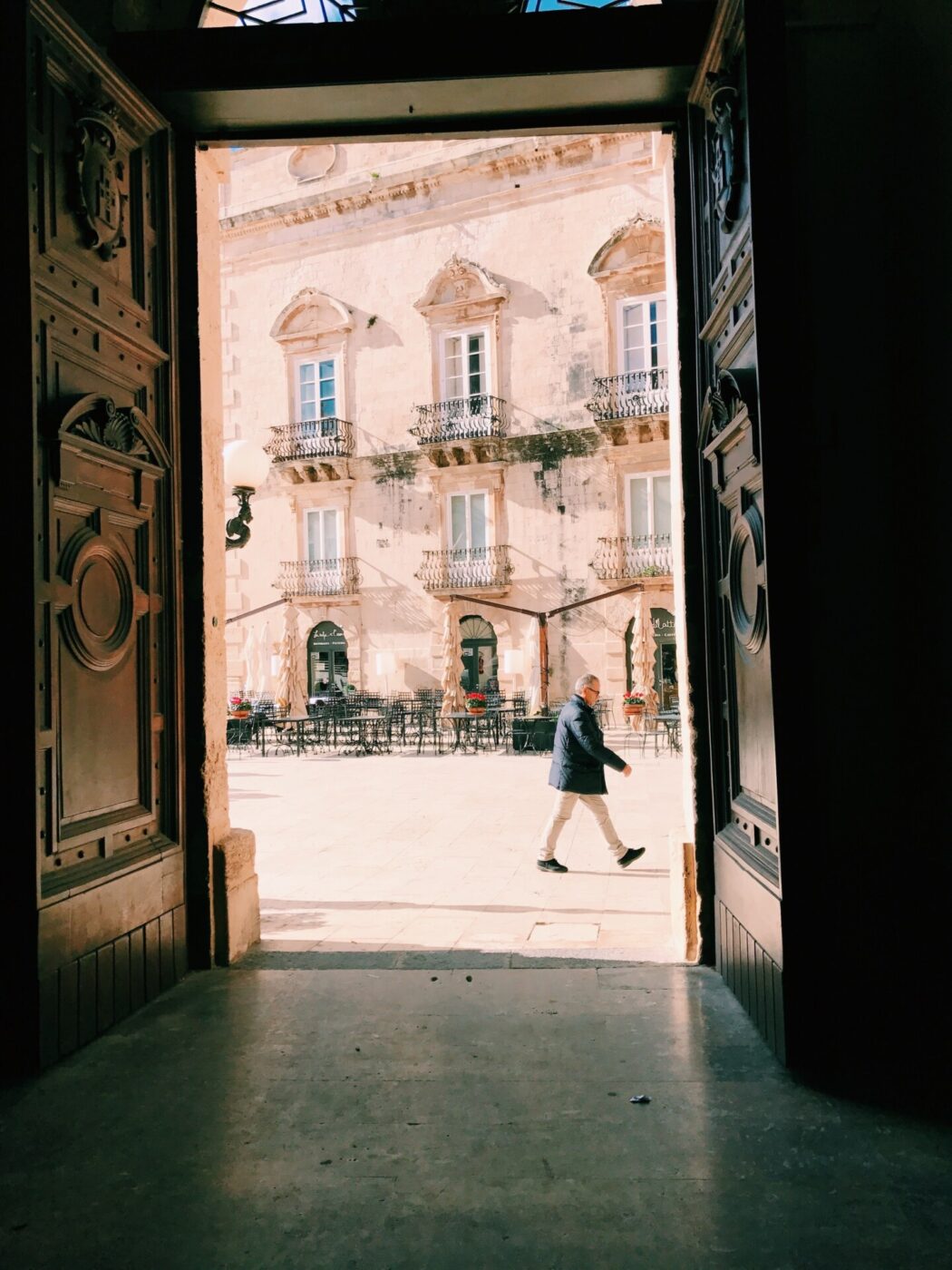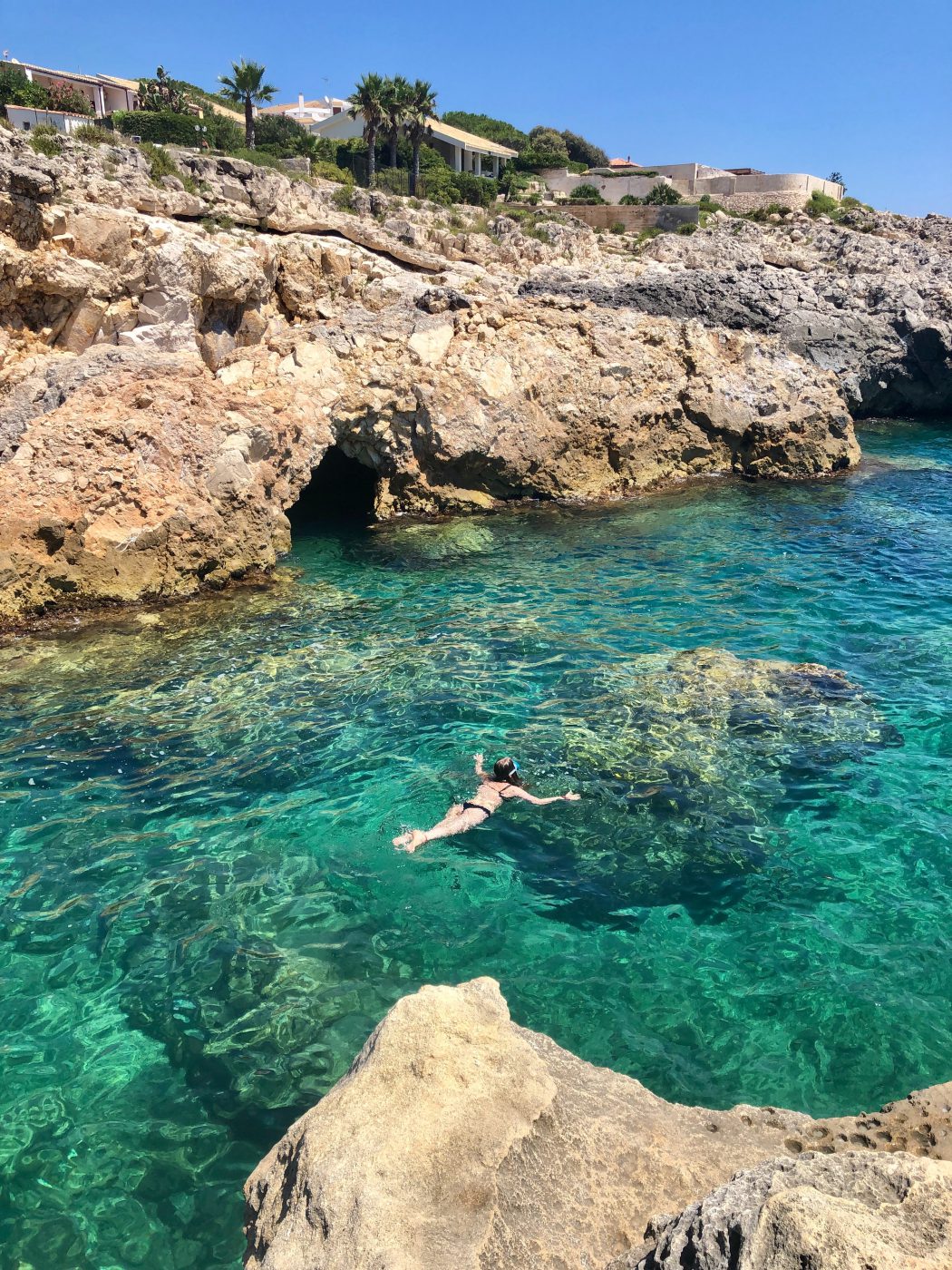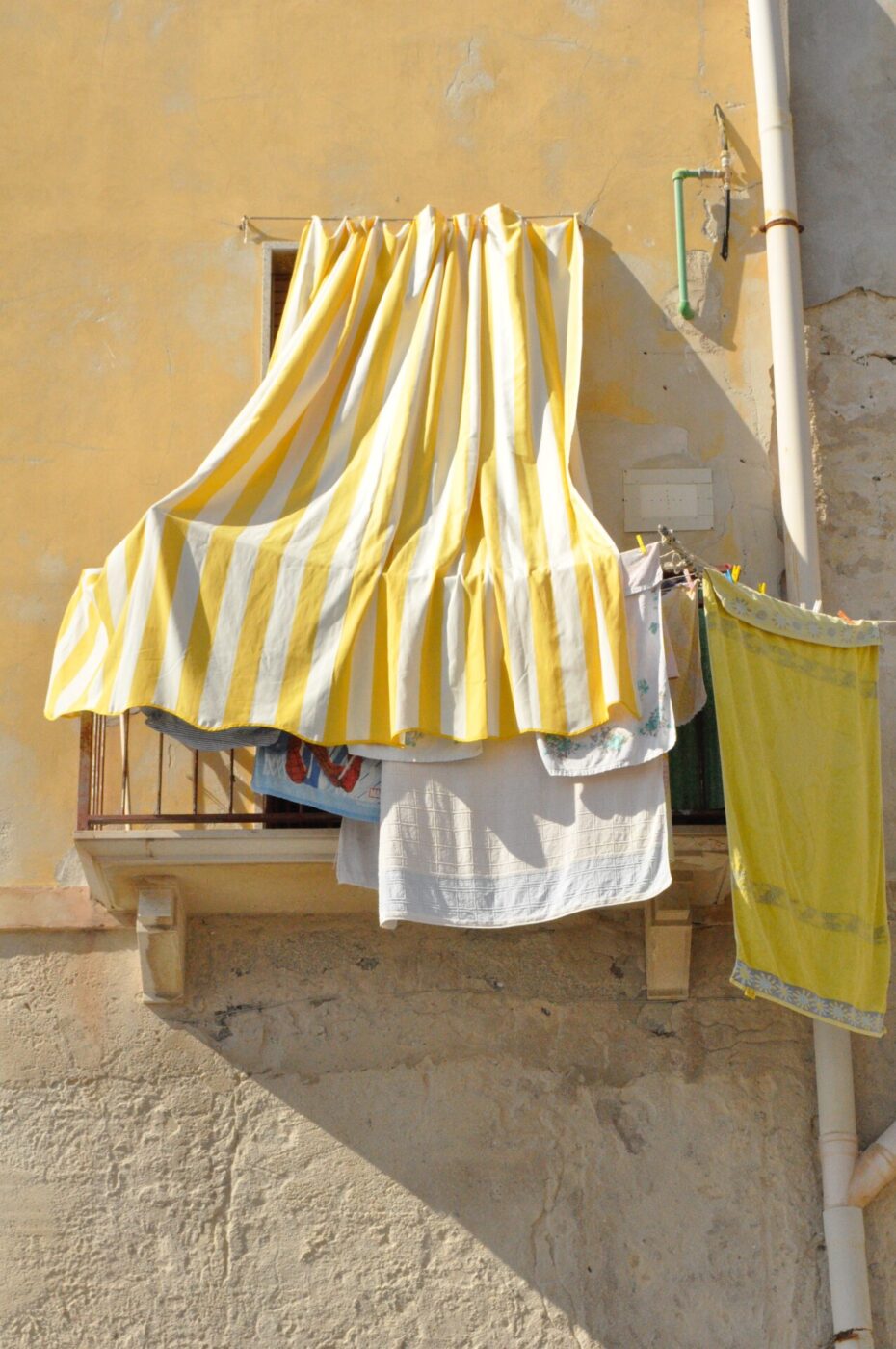The small island of Ortigia is tied to Sicily by two short bridges only.
Located on the very edge of the south-eastern coast, it is a world entirely of its own. Anthony Bourdain wrote about Sicily, “It’s beautiful. It’s old. It’s Italy, but it’s not.” If that is so, then Ortigia is Sicily, but it’s not.
We drove to the end of Syracuse, to a carpark that marked the threshold between ‘mainland’ Sicily and Ortigia, and walked through the charmless concrete jungle among rows of cars that baked in the balmy August heat until we reached the Ponte Umbertino. Crossing the bridge, we entered another realm.
Flanked by honey-cream buildings standing solidly but fraying with age, we followed the straight road leading from the bridge and ended up at the ruins of Apollo’s Temple. Reduced to a few piles of 2,500-year-old stone, the site was the first visual cue of Ortigia’s long-standing past; its history breathes through the entire island and can be felt as much as it can be seen.
Although Ortigia is only one kilometre long and six hundred meters wide, it seemed that, the deeper we walked into the island, the further away the rest of the world felt. As golden hour approached, we wound our way through increasingly narrow streets before stumbling into a vast opening that bustled with life, both present and past. The Piazza Duomo’s pastel shades shone bright in the evening light, and the cathedral practically glowed. The Duomo is Ortigia’s most striking example of its perennial and polychromatic life. It was Andrea Camilleri who wrote of the island’s checkered past: “Sicily has suffered thirteen dominations from which she has taken both the best and the worst. The sequence of different cultures has made Sicily a fascinating place, quite unlike any other.”
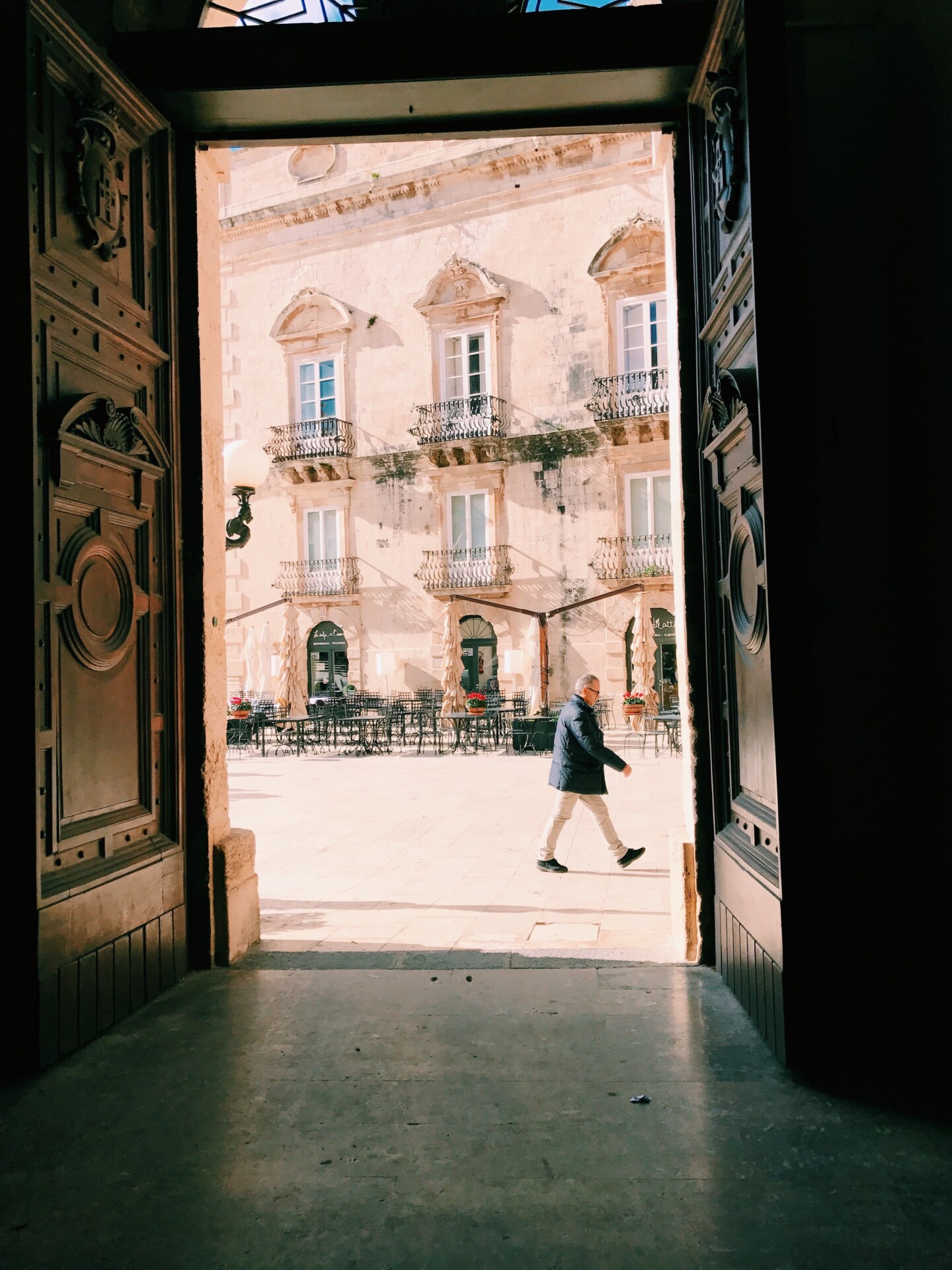
A physical testament to the different civilisations, religions, and populations who settled in Ortigia, the cathedral is layered with varying architectural styles. The first building to be erected on the site of the Duomo was a temple dedicated to Athena in 5 BC; some of its ancient columns still stand today, fossilised into the current 18th-century structure. The cathedral’s Baroque design is further peppered with Byzantine, Norman and medieval influences, and its imposing beauty sweeps throughout the entire piazza. The cathedral feels just as alive as the crowds bustling through the piazza on their way to aperitivo or dinner.
The views of Ortigia’s creamy stones and peaceful shores, the smells of its famous street markets mingled with salty sea air, the ceaseless sound of animated life which travels through the alleyways and piazzas, the feeling of traversing time itself and the indescribable tastes of the food… it is as much a joy to be enveloped by sentimental longing for Sicily as it is torture in the wish to return.
There is no denying the gravitational pull of the island, its mythical atmosphere leaving you in an altered state forever. Like the moon, Ortigia has a crater of its own: the Fonte Aretusa is a natural fountain on the island’s westside. According to Greek mythology, the nymph Aretusa fled from the underwater world of Arcadia to escape the lustrous clutches of the river god Alpheus. To further protect her from Alpheus, the goddess Artemis transformed her into an ephemeral cloud. As she sweated with fear of him, the cloud of Arethusa began to rain down and she metamorphosed into a stream. Eventually, she trickled to the site on Ortigia and became a spring of fresh water. Completely in love with her, Alpheus flowed from the sea and, through a cave underneath the spring, mingled with her waters forever. Alongside Saint Lucy, the patron saint of Syracuse, Arethusa is the region’s patron figure. She is further evidence of Ortigia’s heterogeneous past that continues to be celebrated today, and couples still flock to the spring in hopes of receiving a good omen of love.
Both Sicily’s and Ortigia’s impact is marked by how visitors respond to their time there. The island differs from anywhere else in Italy (or the world) because its beauty is not standardised or orthodox. Sicily is eternal in its wonder, and anyone who may travel there will carry their version of it with them forever. They will leave a part of themselves on the island and spend their lives yearning to collect it.
